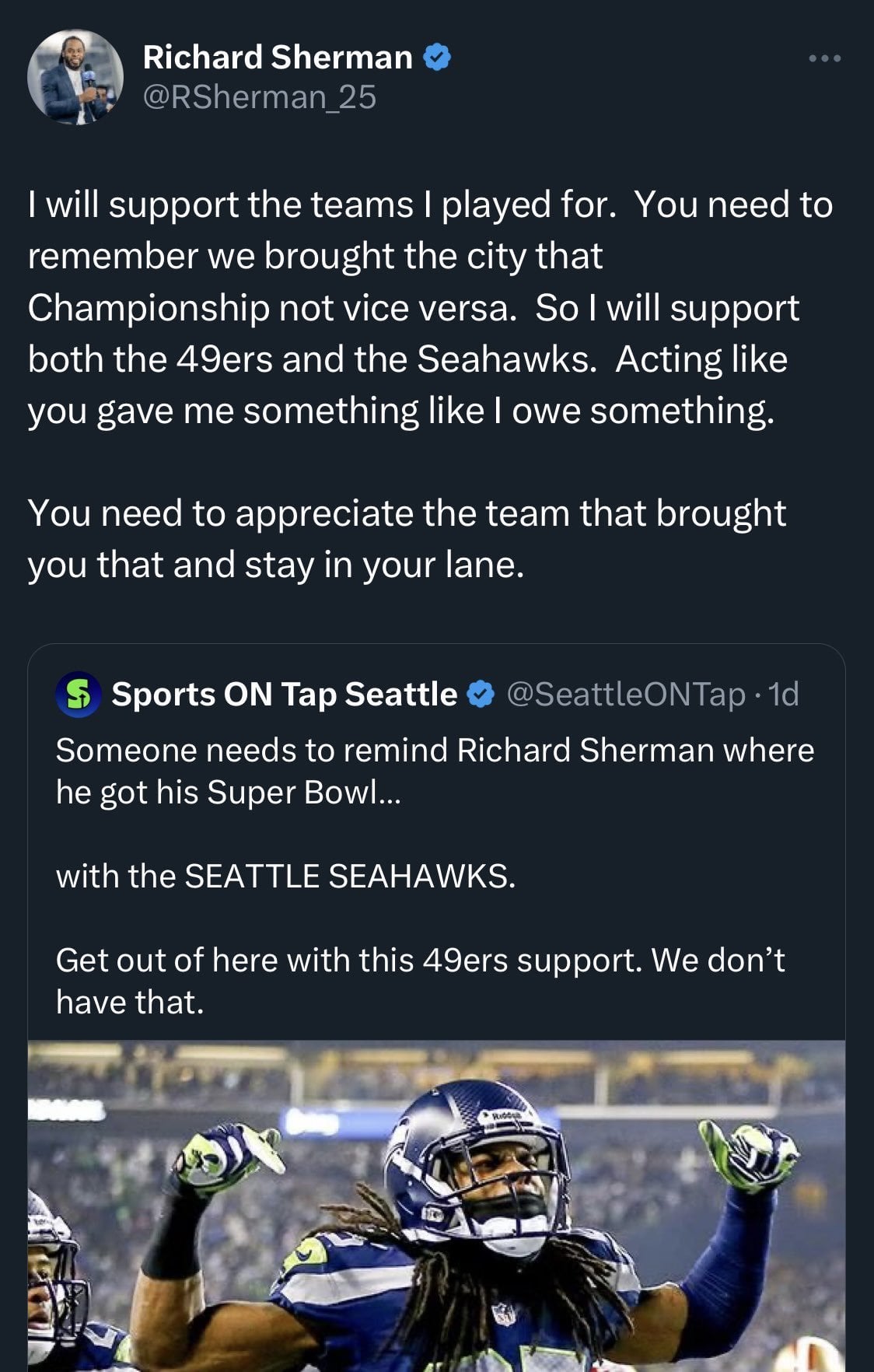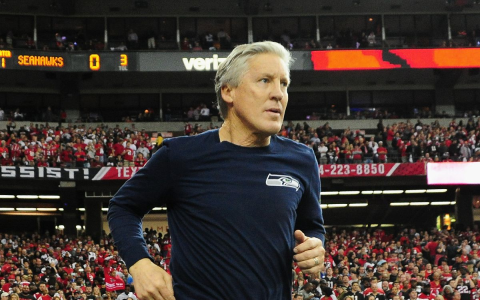In the world of professional sports, fan interaction can sometimes lead to unexpected moments. Recently, former Seattle Seahawks cornerback Richard Sherman found himself in a heated exchange with a fan over the team’s decision to update photos displayed around their facilities. This incident has sparked conversations around fan engagement, team branding, and the emotional ties players have with their past affiliations.
Richard Sherman, known for his fiery personality and strong commitment to his teams, didn’t hold back when responding to a fan who expressed disappointment over the Seahawks changing out photos of past players. The fan took to social media to voice their frustration about the removal of images that represented a significant part of the team’s history. In a world where social media can amplify voices, Sherman’s response highlighted a deeper issue: the connection that ex-players still feel towards their former teams and the legacy they leave behind.

Photos and memorabilia are not just decorations; they are reminders of the journeys, struggles, and victories that define a franchise. Sherman, who spent the prime years of his career with the Seahawks and played a crucial role in their Super Bowl XLVIII victory, clearly has a vested interest in the legacy of the team. His reaction to the fan’s complaint underscores how he—and perhaps many other players—perceive such changes to be a slight against their hard work and achievements.
When teams decide to update their visuals, they often do so with the intention of modernizing their brand or reflecting current player rosters. However, the emotional fallout from removing images of past stars can lead to discontent among fans. The Seahawks, like many franchises, are now at a crossroads between honoring their history and embracing a new era of football. Enthusiasts of the team hold great reverence for the players who made significant contributions to its success, creating a complex relationship between the team’s management and its passionate fan base.
The exchange between Sherman and the fan also raises broader questions about how teams engage with their supporters. In an age where fans expect more interaction and responsiveness from athletes and organizations, the failure to address concerns like these can result in feelings of alienation. Sherman’s stature in the league—a player who was not just a contributor but a household name—amplifies the significance of such discussions. For many fans, Sherman is synonymous with the Seahawks’ glory days, and seeing his legacy diminished or overlooked can be an emotional experience.
Moreover, the dynamics of fan engagement are changing. Fans today not only cheer for their teams but also contribute to conversations about their identities and legacies through social media platforms. The dialogue initiated by the fan’s post and Sherman’s spirited response illustrates the potential for constructive conversations about legacy and respect within sports. As communication tools evolve, so does the opportunity for players to reclaim narratives that they feel are being overshadowed by time and changes in team policy.
Ultimately, as teams like the Seahawks navigate the complexities of branding and legacy, they must consider the feelings of their fan base, especially those who have invested years of passion and support. The past cannot simply be erased; it has to be acknowledged and celebrated within the organization.
In light of Richard Sherman’s passionate defense of his legacy and the legacy of his teammates, it is clear that maintaining a connection with history is vital for both players and fans. This incident serves as a potent reminder of the relationships that bind sports teams and their.supporters, weaving a narrative that goes far beyond the field. As fans and players alike grapple with the implications of change, understanding and dialogue will be essential in fostering a sense of community—one that honors the past while embracing the future.



